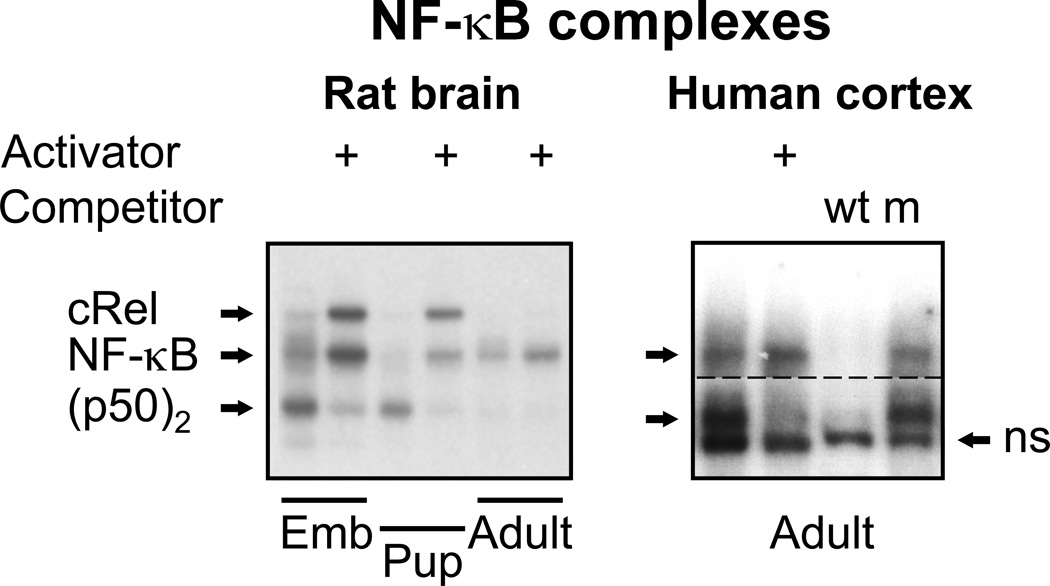Fig. 2.
κB–binding factors identified by an electromobility shift assay (EMSA) in the brain of 17-day-old rat embryos (Emb), 5-day-old rat pups and adult rats (the left panel), and in the dl- PFC of human male subject (the right panel). The constitutively active κB-DNA binding activity (c) was determined by incubation of tissue extracts with labeled κB – HIV enhancer oligonucleotide. To measure total (t; constitutive plus latent) DNA-binding activity of the NF-κB factors, latent factors were activated by treatment with 0.6% deoxycholate that dissociated IκB inhibitory protein from complexes with NF-κB. The specificity of DNA-protein complexes was assessed by competition with wild type-κB (wt) or mutant-κB (m) oligonucleotides. Three complexes in the rat brain consisted of cRel/p65, NF-κB (p65/p50) and p50 homodimer, respectively. Two upper sequence-specific complexes in the human dl-PFC consisted of NF-κB (p65/p50) and p50 homodimer, respectively. The lower complex (ns) showed no DNA-binding sequence specificity and was likely formed by Ku protein. For the right upper image, film was exposured with a gel for longer time than for the lower one. Figure was reproduced from (Bakalkin et al., 1993) and (Okvist et al., 2007) with modifications and permission from the publishers.

